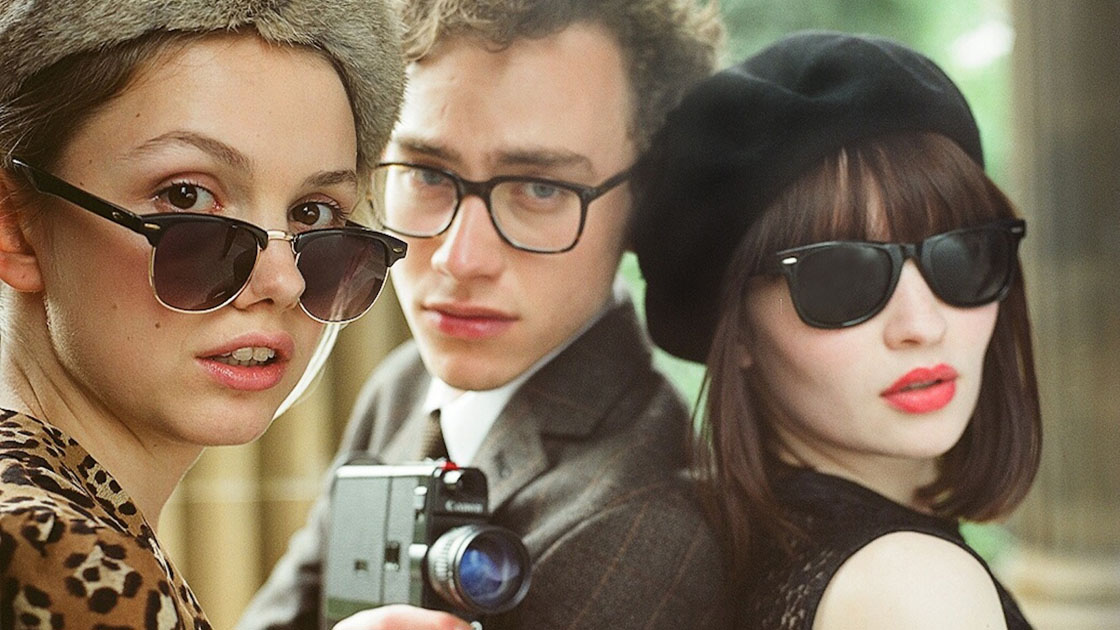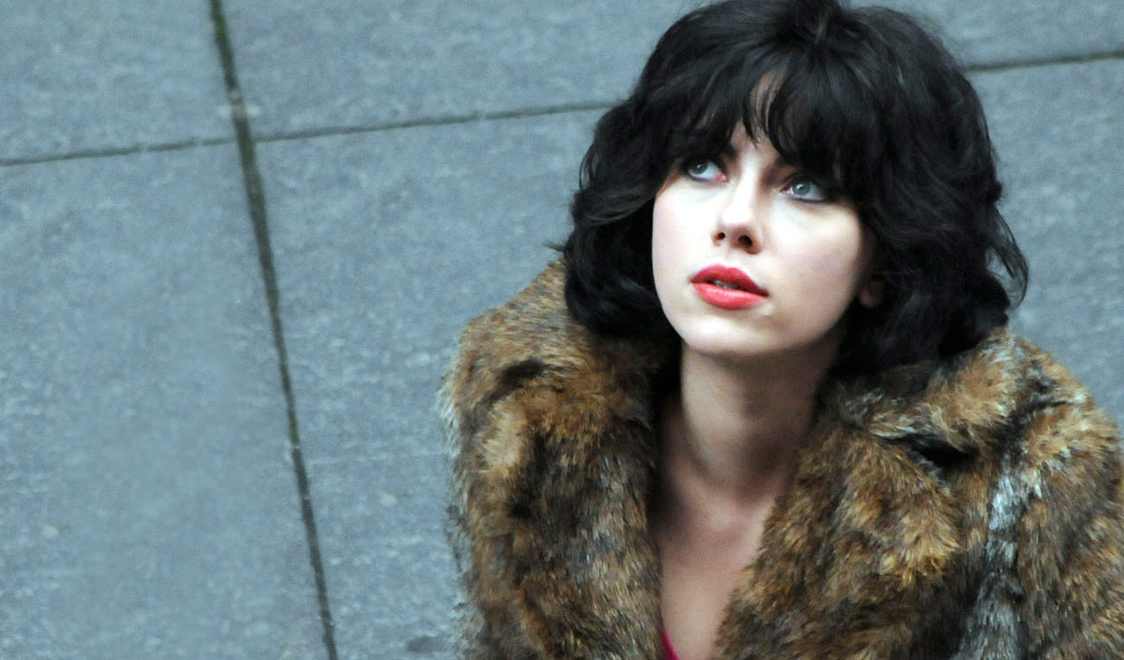
The word ”twee” is generally used as a pejorative but there’s no other way to describe God Help The Girl.
Like pornography, it’s hard to define what is twee, but you know it when you see it. Pressed to explain it, there are a few reliable touchstones: striped scarves (preferably homemade), outdated mediums like vinyl and cassettes, the films of Miranda July and of course, the music of Belle and Sebastian, the legendary Scottish band led by Stuart Murdoch, God Help The Girl’s director and mastermind.
In his book, Twee: the Gentle Revolution, writer Marc Spitz explains twee as an artistic movement centering on outsiders, telling stories whose serious or even cynical core is hidden by bright colours, sweet pop songs and a general sense of buoyancy, like a sugar cookie laced with arsenic. Think of the pastel confections produced by Wes Anderson; each feature tragic deaths but they’re not what we remember. Likewise, God Help The Girl has a serious story, following Emily Browning’s Eve on her slow recovery from anorexia and depression, yet it never becomes an “issue movie.” Instead, it’s a pastiche of quirky film references and self-aware wit, all swinging to a host of bouncy, jangly pop songs.

God Help The Girl began as Murdoch’s side project, conceived as a 60s girl-group, a soundtrack for the film that didn’t yet exist. The songs, which told the story of a young woman, named Eve entering into a difficult adulthood, were recorded by female vocalists as God Help the Girl back in 2009 and are covered by the cast members in the film.
It begins with Eve (Browning) escaping from a psychiatric ward to go listen to a band she likes. As part of her recovery she begins writing music as way to deal with her feelings. Throughout the film, she improvises songs about her life, simple observations about her day-to-day concerns, forming an amazing soundtrack, that teeters between whimsy and melancholy.
Things pick up when she meets James (Olly Alexander), an under-appreciated musician looking for an identity and Cassie (Hannah Murray playing a version of her Skins character), an outcast who goes to “the posh school” in town. The three misfits are drawn together by their shared love of music, and form a band in a bright, sunny Glasgow, far from the grey rainy days most North Americans imagine.

The music is well-integrated into the story–no surprise, as the story was written around the songs. The songs allow the audience access to the inner minds of the characters, which is especially helpful for a secretive character like Eve. Late in the film, James mentions that he learned all about Eve’s past and her eating disorder through listening to her songs, the only place where she fully exposes herself. Indeed, though she seems to be a strong and self-possessed young woman, Eve can be closed off and defensive. Like James, we only gain insight into her character when she sings.
Like the 60s pop musicals it tries to emulate, the plot of God Help The Girl is essentially a vehicle to get from song to song. It works because everyone involved seems to have such faith in the material. The actors seems to feel the emotions in the songs they sing and the chemistry between the core trio is palatable. Most important, is the film’s function as an ode to art’s power to help us heal, an idea Murdoch appears to evangelize.

The film is peppered with a dizzying array of surreal visual jokes, like Maria Von Trapp, guitar case in hand, joining the line of musicians, a newspaper that proclaims itself the choice for geniuses and The Smiths’ Meat is Murder t-shirt Eve wears as she sings about cutting meat out of her diet. Dance sequences recall French New Wave classics and in many scenes, the humour recalls the Beatles’ A Hard Day’s Night, such as the band being chased through the streets.
The songs swirl into a beautiful world where shining girls dance through the streets of Glasgow like it’s their own personal playground, always dressed for a costume party in enviable vintage. Songs cut into elaborate sequences of the band playacting on golden hills in school uniforms and battling with umbrellas on courthouse steps, that seem like mini-music videos. The film is so stuffed with beauty and whimsy that it often seems hard to make room for the parts of the story that are truly ugly.

For all the talk of Eve’s health problems, the film sure does make her thinness appealing. Though she mentions she carries everything she owns in her backpack, she has a massive, stunning wardrobe, full of skin-tight outfits that would only work on a rail-thin body and would make great thinspo for those sadly inclined. Though she left the hospital before she was deemed recovered, Eve seems to have no self-confidence issues or need to hide her weight as expected in someone with anorexia. She also mentions being happy with the size of her breasts and is comfortable beings seen naked and having sex, all of which don’t appear characteristic of a severe anorexic who quite recently had difficulty having a full meal with her shrunken stomach. Also unusual is the fact that we never see her eat. Though several songs mention her refusal to eat and her desire to recover, we never get the satisfaction of seeing her take a bite.
Each day, she counts out and takes pills for other unspecified mental health problems but the film avoids any real discussion of what else is wrong with her and of her past. We learn she left her home in Australia to follow a boy to Scotland, which hints at further mental instability but it is never elaborated on. It appears as if Murdoch figured the visual iconography of Eve holding her pills in her hands and looking sad would enough to show the depth of the character’s depression. Ultimately, Eve’s problems are boiled down to her inability to live in the adult world.
Befitting of the twee genre, God Help The Girl is tonally inconsistent, going from sappy to silly in the blink of an eye. It often feels over-long and self indulgent, as some scenes drag on longer than they should have. It’s clear Murdoch is in love with his own story and expects us to want to spend as much time in its world as he’ll allow us. Likewise, it can often be a bit too precious. It’s easy to see how it could turn some off, induce toothaches, that sort of thing, in the viewer that isn’t ready to surrender to it’s sweet sweet glory.
Eve, Cassie, and James are the sort of characters mentioned in Belle and Sebastian songs come to life. The insecure hipster boy, the ethereal dancing schoolgirl, the depressive singer who believes in the power of books and faith healing, all appear in Glasgow isolated from anyone but each other. None of their families seem to exist, nor do outside friends, besides Eve’s drug buddy who pops up out of nowhere for a short scene. What little we know of their earlier lives comes from a single conversation.

As expected, James falls in love with Eve. He can’t help it, there’s something about her, mysterious and quiet as she is, that plays into his every romantic notion. Though he’s not alone. Everyone she meets seems attracted to Eve and longs to help her put herself back together. She’s irresistible and she knows it, yet we don’t hate her for it.
God Help The Girl is deceptively posed as a band origin story; you know the sort: three lost individuals come together to form a band, have their dreams of fame come true and fall into an ugly break-up and/or drug addiction. The band in God Help the Girl, forms briefly and dissolves amicably (though not without the obligatory scene of hearing their song on the radio), but it turns out, in the end, it was Eve’s story all along.
She gets on a train to go to music school in London and live a new life, with the structure she needs to function as an independent adult and we realize their summer with Eve was just a momentary phase in James and Cassie’s lives. For Eve, this summer was the last bittersweet gasp of life before becoming a real adult, her oft mentioned anxiety and though they will all remember it fondly, they will never be able to recapture it again. She is greatness and for one brief, shining moment they shared her light. There’s no question she will be a pop music legend someday and they will have known her when.
We’re not sure what will happen to the others. Eve is the singer, the songwriter and she creates their world. She allows us to think on the nature of fiction, of the stories we piece together from the raw stuff of our lives. After all the title pleads for help for Eve, she’s the girl we’re meant to focus on.
God Help The Girl is a movie that really seems meant for bored, yet artistic teenagers isolated in the suburbs and sure that no one else shares their tastes. It’s destined to live on as a cult hit, “discovered” again and again by young people–like a relic of some obscure 60s group no one else has ever heard of.
It’s the kind of movie you step out of and think, “So, there are people like me out there!”
________________________________________________________________________________________________________
Elizabeth Kiy is a Canadian writer and journalist living in Toronto, Ontario.







